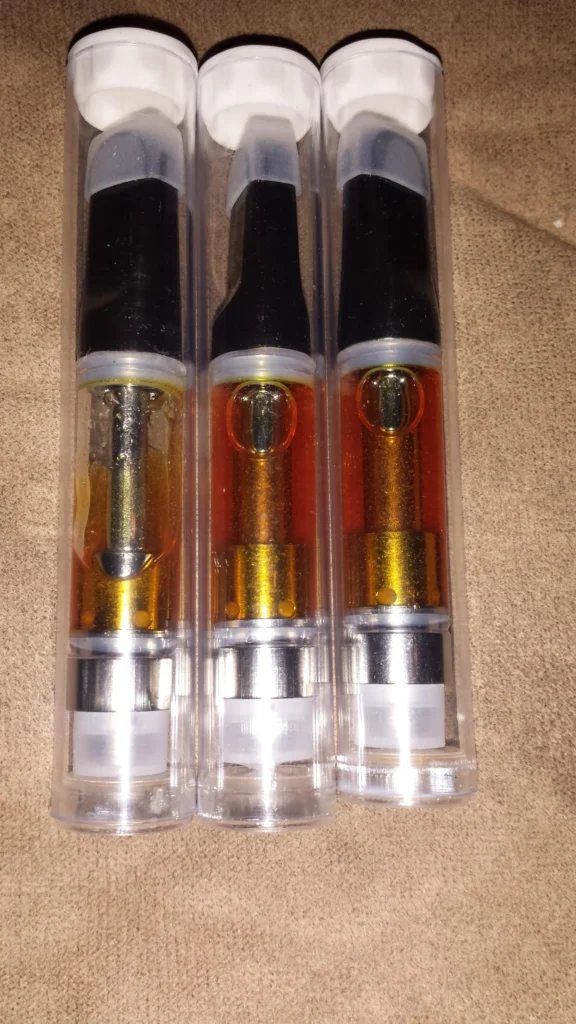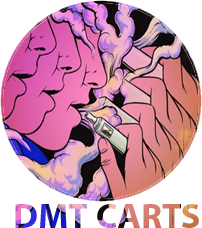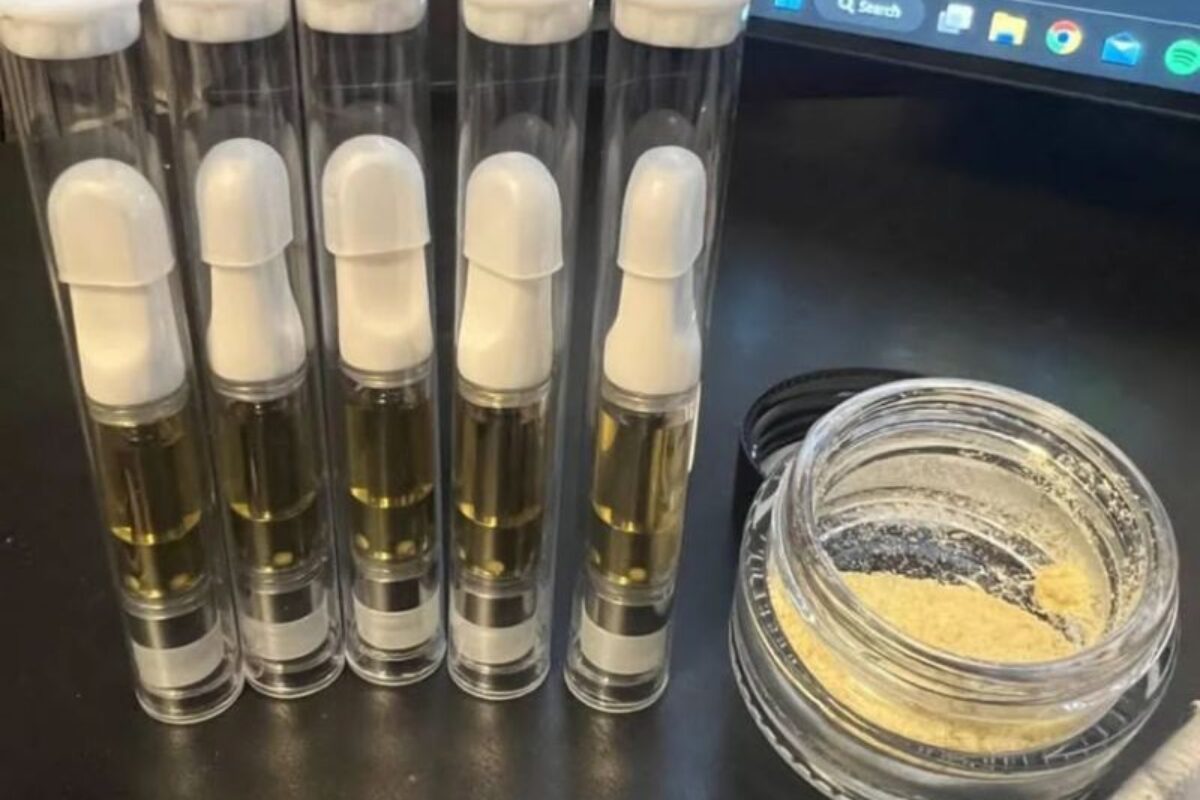What Is DMT carts?
dmt carts DMT is a type of hallucinogenic drug. Like other hallucinogenics, DMT can alter a person’s perception. It changes how they experience stimuli in their environment. Drugs like DMT are known for inducing effects similar to those of psychosis. Paranoia and hallucinations are the most common of DMT’s side effects.
One thing that sets DMT apart from other hallucinogenics on the market is that its use dates back centuries. Unlike many drugs that are manmade, DMT is naturally occurring. You can find DMT in a number of plants, but the best-known example is the ayahuasca plant. With that said, DMT can also be produced in a lab. Synthetic DMT has been produced since as early as the 1930s, starting with Richard Manske, who was a chemist in Britain.

Despite being naturally occurring, DMT is a controlled substance in both its organic and synthetic form. Recreational use of DMT became common in the 1960s. By the 1970s, the DEA classified it as a Schedule I drug2. Schedule I drugs are the most regulated of all drugs. DMT made the Schedule I list because of its dangerous side effects, high abuse risk, and a high potential for psychological dependence.
Although it has been highly controlled since the 1970s, the reports that DMT is still on the illicit drug market. Any DMT being sold is illegal to purchase. DMT finds its way into the United States by being illegally imported or by being manufactured somewhere in the form of synthetic dmt carts. The drug can be smoked, brewed into tea, taken orally, or snorted.
Marijuana is also a naturally occurring drug and it is being explored for its medical benefits. Unlike marijuana, though, DMT has no known use in the medical world. Because of the risks associated with DMT, getting a license to legally obtain it for research requires special permission from both the Food and Drug Administration (FDA) and DEA.

DMT is highly controlled in North America. Still, certain groups in Central and South America continue to use DMT in religious ceremonies. Some, “guides,” in the United States and elsewhere bring groups of people into nature to use DMT under their instruction. However, they are not medical professionals and their supervision does not make DMT any safer to use. Understanding how DMT works in the body and its risks is important in debunking misconceptions.
How Does DMT Impact the Brain?
The hallucinogenic effects of DMT are powerful and potentially dangerous. Those who have taken DMT give anecdotal evidence of side effects. One of the most common side effects is an extremely heightened perception of all stimuli in the surrounding environment.
The altered perception of DMT begins with colors, which appear much more intense than they usually do. Those taking DMT also experience exaggerated sensations upon physical touch. The things they hear may also seem louder. Or, they may listen for and recognizing even the smallest noises that the brain typically dismisses.
One using DMT will observe changes in perception with all of their senses. Part of the hallucinogenic effect also includes seeing, feeling, hearing, and smelling things that are not there at all. A person using DMT may also experience synesthesias3, which are confused senses. A person experiencing synesthesias may think that they are hearing a color, for example. The distorted perception that accompanies DMT use does not end with those strange experiences.
DMT can cause cognitive changes, which can pose a great danger to someone under the influence of the drug and those around them. As an example, a person on DMT may feel invincible. DMT can also make a person feel like their mind is exiting their body or the things around them are not really there.
The mind-altering side effects of DMT continue with delusions, like a distorted perception of things seen and heard. The perception of time can change as well, with a person sensing time is moving far more quickly or far more slowly than it really is. In extreme cases, DMT can make a person feel that they have transformed into something else, like an object or animal.
Researchers have found parallels between dmt carts and psychosis. The experiences of taking DMT mimic the side effects of individuals who have neurological problems4. For instance, the experiences DMT produces are very similar to the experiences of people who have suffered a stroke or brain injury. If someone were to describe the experiences DMT induces without having taken the drug, they would likely be diagnosed with some kind of psychotic disorder. This highly concerns the scientific community.
Unfortunately, those who use DMT recreationally market it as a, “mind-expanding,” drug. However, it is unknown what damage it could cause to a person’s mental state. The long-term effects of DMT are not well understood, but short-term side effects can be life-threatening.
Who Uses dmt carts?
Due to its status as an illegal drug, no organization is able to tally up how many people use DMT on a regular basis. However, the Substance Abuse and Mental Health Services Administration (SAMHSA) does compile an annual report5 on drug use based on medical and other data available in the United States. For those over the age of 12, SAMHSA reports more than 1 million cases of hallucinogenic drug use at some point in the last year.
Unfortunately, the trend of hallucinogenic drug use is on the rise and has been for some years now. With that said, hallucinogenic drugs do not have nearly as many users as other types of drugs, like stimulants. However, there has been a significant increase in the use of hallucinogenic substances amongst younger individuals. Because of the effects and dangers of DMT, use amongst young individuals is very concerning.
Windward Way Recovery provides personalized treatment programs for people of all ages who are misusing substances like DMT. Our guide for parents and our guide for partners can prove very helpful in assisting a loved one in getting the help they need. Learn about getting a loved one into rehabilitation.
Side Effects of dmt carts

While taking DMT, a person may experience a range of side effects. 6Common side effects include nausea, vomiting, diarrhea, and even unconsciousness. Asphyxiation is possible if someone becomes unconscious after taking DMT and begins vomiting. Seizures may also occur as a result of DMT usage, and these can be life-threatening.
Additionally, DMT can impact blood pressure, body temperature, and heart rate. If a person is experiencing anxiety, or has in the past, these changes can lead to the onset of an anxiety attack. Similarly, DMT can lead to difficulty breathing. It is unclear if breathing problems are a side effect of the anxiety DMT can induce or if they are related to the nervous system directly.
The physical changes of DMT, like how it increases the heart rate, can also lead to cardiac arrest (i.e., a heart attack). The risk of a heart attack is greater for those with heart-related conditions. Those taking medications for chronic pain or depression are also at a higher risk of experiencing a heart attack after taking DMT.
The Long-Term Risks of Taking dmt carts
The effects of hallucinogenic drugs also go beyond the initial episode or, “trip,” someone experiences after taking the drug. Beyond the point where DMT wears off, people are likely to experience negative side effects from taking it. Some of these side effects can turn into lifelong conditions. One of the most common and notable effects of taking DMT is anxiety. The anxiety induced by DMT can occur during an episode (i.e., while the drug is active in the system) and even after the drug wears off.
Many users describe the severe anxiety they experienced similarly to a panic attack. The effects of DMT anxiety can include sweating, rapid heart rate, trouble breathing, overwhelming fear, paranoia, and irrational thoughts that consume the mind.
Beyond anxiety, other mental health issues can result from DMT consumption. A person who takes DMT may begin to develop symptoms that are typically associated with mental health disorders. Examples include depression, changes in mood, and prolonged psychosis. The risk of developing long-term conditions is greater in individuals who have an unpleasant experience with a hallucinogenic drug.
Some individuals who experiment with hallucinogenics like DMT can develop a chronic condition. Hallucinogen persisting perception disorder (HPPD) results in flashbacks to times of prior drug use. For example, a person may not take DMT for a long period of time, but they will suddenly begin experiencing the hallucinogenic effects all over again.
HPPD is most common in those who use LSD who experienced multiple negative episodes. HPPD is also more likely for those who have an underlying psychological disorder. However, researchers believe it is possible for anyone who is taking DMT or another hallucinogenic drug to develop HPPD.
Those who have HPPD will find that flashbacks come on randomly and suddenly. The HPPD experience can be terrifying. An HPPD episode can cause someone to believe they are having a stroke or that something is wrong with them neurologically. Treatment for HPPD begins with specific medications to help manage the related symptoms, which might include anxiety.
How Long Does dmt carts Last?
The psychoactive effects of taking DMT are very similar to those that LSD produces, but the effects of DMT do not last nearly as long. While LSD can alter a person’s mental state for 12 hours or longer, the effects of DMT may last mere minutes to a few hours. The duration of DMT effects depends on how much one consumes and how they used it. For individuals who use psychoactive drugs, DMT may be the go-to choice because of its short-lasting effects.
Since DMT does not affect the mind for as long as LSD, or similar drugs like mescaline or psilocybin, it may be preferable. However, DMT is still as dangerous as its longer-lasting hallucinogenic counterparts. The typical DMT episode contains periods of altered perception and sensory hallucinations. It is possible to have dissociative experiences while taking DMT, but they are not as common.
Can You Overdose on dmt carts?
It is not yet known how much DMT is toxic or fatal for the average adult. Because DMT use in the United States is difficult to measure, there are no clear numbers on how much one must take to reach the point of overdose. However, overdosing on DMT is possible.
There are deaths linked to DMT use, but they primarily involve cases where a person combined DMT with another drug. With that said, DMT does not have to be combined with an illicit drug to be fatal. DMT has led to fatalities amongst people who combined it with alcohol or pain medications, even in small amounts.
DMT can also lead to indirect injuries and fatalities. For instance, a person under the influence of DMT is more likely to get injured, be involved in an accident, or get hurt because of the poor judgment caused by their altered perception or mental state.
Dependence and Withdrawal
With regular use, a person will develop tolerance to DMT over time. Tolerance7 means that a person will have to take more of the drug to continue experiencing the same effects. For instance, a person who has developed tolerance will find that their episodes are shorter or less intense. In order to ramp up the effects, they’ll take more DMT. Over time, they grow tolerant to that amount as well, and the cycle repeats.
While tolerance is likely, physical dependence on DMT is not. DMT has few known withdrawal symptoms. Withdrawal symptoms are negative side effects people experience as a drug leaves their system. Withdrawal symptoms are often so bad that a person ends up taking more of the drug to avoid them. This creates a cycle where a person uses a drug more and more often in order to avoid withdrawal symptoms. Meanwhile, withdrawal symptoms continue to get stronger each time they use the drug.
While DMT does not have any known strong physical withdrawal symptoms, it can produce emotional dependence. The change in perception and mental state that occurs when a person comes off DMT can lead to a form of dependence on the drug. DMT can also lead to certain informal withdrawal symptoms, like depression, anxiety, apathy, fatigue, irritability, and agitation.
How to Stop Using dmt carts
Like any type of substance use, stopping DMT for good and avoiding future use begins with the right support system. Often, people seek hallucinogens as a form of experimentation or self-exploration, but dependence can develop. DMT can also lead a person to try other drugs that have withdrawal symptoms and addictive qualities.

